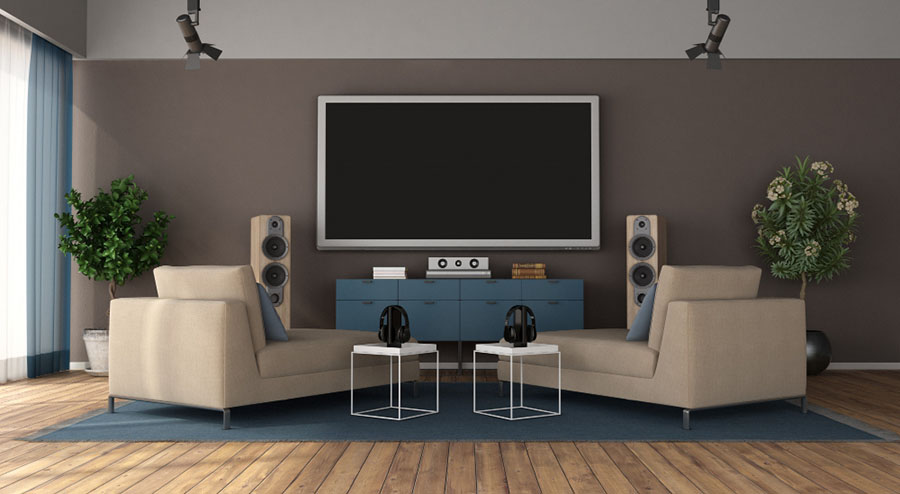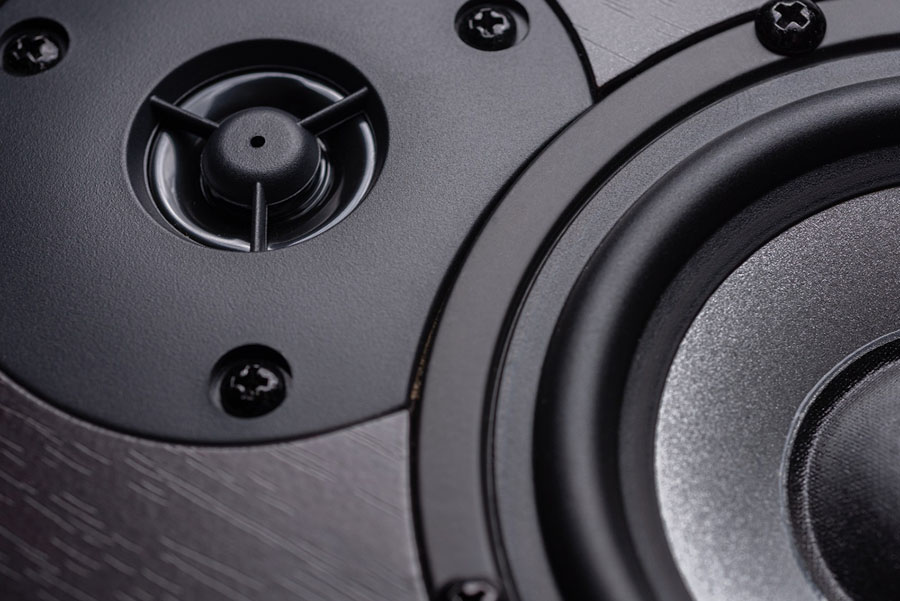Choosing the right subwoofer setup can significantly impact your home theater experience, from immersive bass tones to the overall audio balance. One common concern is whether can you use two different size subwoofers for home theater.
This article dives into the intricacies of mixing and matching subwoofers of varying sizes in a home theater environment.
It explores the technical considerations, potential challenges, and best practices to ensure optimal performance and seamless integration.
Let’s unleash the full potential of your audio setup and elevate your home entertainment experience to new heights!

Can You Use Two Different Size Subwoofers for Home Theater?
Yes, you can use two different-sized subwoofers for your home theater setup room. Using multiple subwoofers, even if they are different sizes, can provide a smoother and more even bass response throughout the room. This approach minimizes resonances and inconsistencies caused by low bass frequencies interacting with room dimensions and speaker placement.
While subwoofer size doesn’t matter as much, proper integration is crucial. During setup and calibration, you must carefully adjust the level, phase settings, and placement. This ensures the bass from all subwoofers blends cohesively. When done right, a mixed subwoofer configuration can enhance your overall audio experience.
Benefits of Using Different Size Subwoofers
Using different-sized subwoofers in your home theater setup can bring several advantages. This approach leverages the unique strengths of each subwoofer to create a richer and more immersive audio experience. Here are some benefits of incorporating subwoofers of varying sizes into your system:
Filling bass gaps and addressing room modes
Two different size subwoofers home theater can help fill gaps in the bass frequency range and address issues with room modes. Larger subwoofers excel at reproducing the ultra-low frequencies below 30-40 Hz that provide a solid foundation.
Smaller subwoofers often better handle the punchier mid-bass regions around 50-100 Hz. Combining them covers the full bass spectrum more evenly.
Due to their different sizes and placements, multiple subwoofers interact with room resonances differently. This helps to smooth out peaks, dips, and anomalies caused by room modes.

Achieving a balanced and immersive experience
Using different sizes of subwoofers together creates a more balanced sound. You get tight, hard-hitting transients and smooth, deep bass without any frequency feeling too boomy or thin.
This well-rounded bass foundation puts you right in the middle of the action, whether you’re watching movies or listening to music. Compared to a single subwoofer, it creates a more engaging and lifelike experience. With evenly distributed bass, you won’t experience as many dead spots or boomy areas in the room.
Considerations When Mixing Subwoofer Sizes
Several important considerations must be made when deciding whether can you mix subwoofer sizes. Different sizes can complement each other, enhancing the overall sound quality.
However, achieving the right balance requires careful planning. So, you should keep in mind the following:
Placement and crossover considerations
Proper placement is key when mixing different-sized subwoofers, as each sub interacts with room dimensions differently based on size. Generally, you should spread them throughout the room, but larger subs benefit from corner placement to reinforce low-end output.
Setting accurate crossover points and levels is also critical for seamless blending. You should use bass management to allocate ultra-low frequencies to the larger sub and upper bass to the smaller one where it excels. Match output levels precisely and ensure phase alignment to avoid cancellation issues.
Integration process and recommendations
- Start with your main/largest subwoofer as the foundation.
- Methodically introduce additional subwoofers one by one, adjusting the following settings for each crossover, level, phase, and placement.
- Use measurement tools like SPL meters and room EQ software for precise calibration and ensure the subwoofers blend cohesively.
- Implement room treatments like bass traps to help address remaining modes.
- Take an incremental approach and have patience – proper integration takes effort but yields balanced, room-filling bass that immerses you in the audio experience.
Room Acoustics and Bass Management
Room acoustics refers to how sound behaves within a space, influenced by dimensions, materials, and furnishings. On the other hand, proper bass management involves optimizing the placement and settings of subwoofers to ensure balanced and accurate low-frequency reproduction. Understanding these is crucial for creating an immersive audio experience in any space.
Room acoustics considerations
Proper subwoofer placement and room treatment are key for a smooth bass response when using multiple subs. You need to try positioning subs in corners for more reinforcement but experiment to find the optimal positions.
You can use bass traps, absorbers, and diffusers to control resonances, reflections, and buildup that can cause boomy or uneven bass. Don’t forget those first reflection points either – taming them will make your bass clearer than ever.
Moreover, your room’s size and dimensions play a big role too. If you’ve got a big space, you’ll need more subwoofer power and some boundary backup. And if your room’s dimensions aren’t symmetrical, you’re in luck – that can actually help cut down on any annoying ringing.
Bass management setup
You should utilize the bass management settings on your AV receiver or processor. This will direct low frequencies to your subwoofers while ensuring your speakers are not overdriven. Set the crossover frequency based on your speaker specifications, but adjust it higher if the bass still feels too heavy.
Once you’ve level-matched your subs and speakers, it’s time to smooth out any remaining bass issues. You can use room EQ or parametric EQ (PEQ). This careful setup ensures that tight, impactful bass are evenly distributed throughout your room.
So, bass management integration is crucial for a seamless blend between speakers and subs. If you notice any holes or peaks in the bass response, you can use manual PEQ to fix them. Proper calibration maximizes output while minimizing distortion and localization issues.

Conclusion
The debate over whether can you use two different size subwoofers for home theater might be forever, but the answer is a resounding yes. Incorporating subwoofers of varying sizes can enhance your audio experience by filling bass gaps, addressing room modes, and delivering a balanced, immersive sound.
However, achieving optimal performance requires careful consideration of placement, crossover settings, and integration processes. By utilizing bass management, conducting precise calibration, and addressing room acoustics, you can unleash the full potential of your audio setup and elevate your home entertainment experience.
You should explore the possibilities of mixing subwoofer sizes to create a dynamic and enveloping soundstage in your home theater setup!

